Our Bug Ambassadors are a great way to engage kids of all ages in the fascinating world of insects and their close relatives. Below are some of the ambassadors you’ll likely meet at one of MBHI’s outreach events. For a more in-depth look at our animal’s life-histories, check out the Notes from the Lab. To find out about what local bugs you might be seeing, head over to What’s Buzzin’.
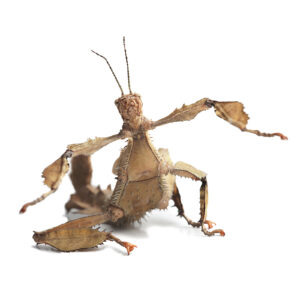
The Aussies
Extatosoma tiaratum
Home Range: Northern Australia and New Guinea.
Habitat: In eucalyptus trees.
Wild Diet: Primarily eucalyptus leaves.
Life Span: Females can live between 9-18 months and males 6-8 months.
Interesting Facts: Aussies are masters of camouflage. They look like dead leaves and will sway from side to side in the breeze or when disturbed. If threatened, they rear up, curl their abdomen like a scorpion’s “tail," and show off their spines. Adult males can make a hasty retreat and fly away.
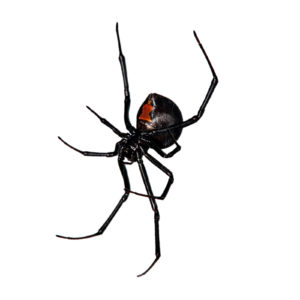
Natasha
Lactrodectus spp.
Home Range: Five different species of widow spiders are found throughout the U.S. and southern Canada.
Habitat: Found in dry, sandy, or rocky areas.
Wild Diet: Will eat almost any insect they can catch in their web.
Lifespan: 1-3 years.
Interesting Facts: The Black Widow is the most venomous spider in North America, so when she joins us at outreach events, it’s an “eyes only” experience. Black Widow spiders are typically not aggressive, and bite as a defensive measure when they are attacked or feel threatened.
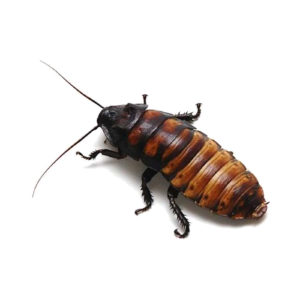
The Hissers
Gromphadorhina portentosa
Home Range: Madagascar
Habitat: Moist tropical forests; found under dead bark and in decaying vegetation
Wild Diet: Opportunistic scavengers
Life span: Usually 2-3 years; occasionally up to 5 years
Interesting Facts: Hissing is what The Hissers do best! They unleash this startling sound to ward off predators. Instead of using a mouth to produce it, they contract their abdomen and forcefully push air out of their fourth pair of breathing holes (spiracles), located along the sides of their body. Adult males also hiss in defense of their territories, to communicate, and in courtship and mating rituals.
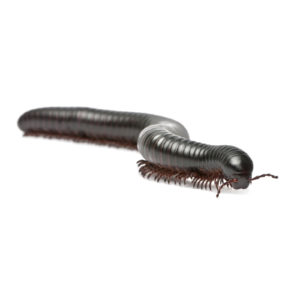
Milton
Archispirostreptus gigas
Home Range: Tropical regions in Africa
Habitat: Lives in dark, damp places
Wild Diet: Fresh and decaying plant material
Life Span: Up to 10 years
Interesting Facts: This is the largest species of millipede in the world, with a record specimen of 15.2 inches long! Typical adults are seven to nine inches, exceptional ones 10. When they walk it is entrancing. Three hundred to four hundred legs move in a wave-like motion. Although they are the biggest species, they aren't the leggiest. A newly discovered species from Western Australia is the first “true” millipede (milli-thousand, -pede feet). The individual, found deep underground, had 1,306 legs—the most of any known animal. Other millipede species can have as many as 750 legs.
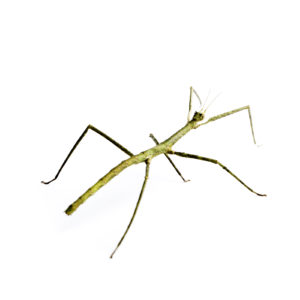
The Styx
Medauroidea extradentata
Home Range: Vietnam
Habitat: Lives in tropical forests
Wild Diet: Variety of leaves
Life Span: Approximately 6-8 months
Interesting Facts: Our population of Vietnamese Walking Sticks is all female, yet new babies (nymphs) are hatching all the time. How is this possible? Females can lay unfertilized eggs that are genetic copies of themselves, a process called parthenogenesis. They can also mate with males, but males are rare in the wild population. Mating allows for adaptations to changing conditions in the environment.
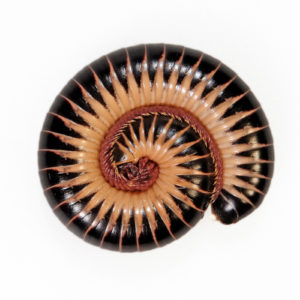
Milhouse & Mildred
Asbolus verrucosus
Home Range: Southeastern United States
Habitat: Lives in dark, damp places
Wild Diet: Fresh and decaying plant material
Life Span: 5 to 10 years
Interesting Facts: Even with their gentle nature millipedes are hardly defenseless. Their plated segments protect them like a suit of armor, and some, like this species, can coil up their bodies to cover their vulnerable underbellies and legs. Others release smelly, yellowish fluid from pores along their bodies. This fluid is distasteful and can be toxic to smaller animals.
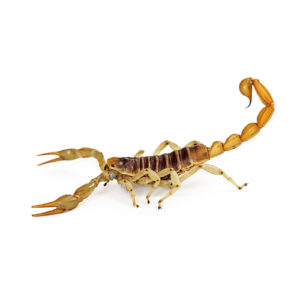
Harry
Hadrurus arizonensis
Home Range: American southwest, throughout the Sonoran and Mojave deserts
Habitat: Can be found in hot, dry, low-elevation valleys, where they may build burrows up to 8 feet in depth!
Wild Diet: Invertebrates and small vertebrates such as lizards
Life Span: May reportedly live up to 20 years in captivity!
Interesting Facts: Desert Hairy Scorpions are rather docile, preferring to flee rather than fight. However, they will assume a defensive position and sting if cornered and provoked. For us, the venom is weak to mild and similar to a bee sting. These are the largest scorpions in North America, reaching 5.5 inches in length.
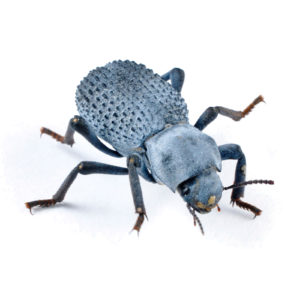
The Blue Crew
Asbolus verrucosus
Home Range: Southwestern United States
Habitat: Lives in the desert, in moderately moist soil
Wild Diet: Fresh and decaying vegetation
Life Span: Can live up to 10 years!
Interesting Facts: Blues have a thick, roughened exoskeleton and fused wing covers, which makes it impossible to fly or disperse widely, but helps retain moisture. They also secrete a bluish-gray wax over their exoskeleton. The wax acts like another barrier to water loss and the color reflects ultraviolet light, keeping them cool.
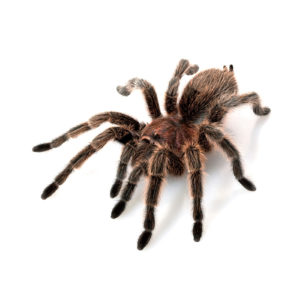
Roseanne
Grammostola rosea
Home Range: Bolivia, Argentina, and Northern Chile
Habitat: Lives in shallow burrows in forested areas; also deserts and scrublands
Wild Diet: Mostly large insects such as crickets, grasshoppers, beetles and roaches; will also eat smaller tarantulas and other spiders, frogs, and baby mice
Life Span: 15-20 years for females; 1-2 years for males
Interesting Facts: Rosies use venom as a last resort for defense. Instead, they rely on hiding in the security of their burrows. If pursued, they use their hind legs to brush irritating hairs off their abdomen, called urticating hairs. These become airborne and function like microscopic porcupine quills. Most New World tarantulas possess these hairs. While a tarantula may not be as cuddly as a dog or cat, Rosies are calm and gentle enough to hold. They are also one of the most common and most reasonably priced tarantulas in the pet industry.
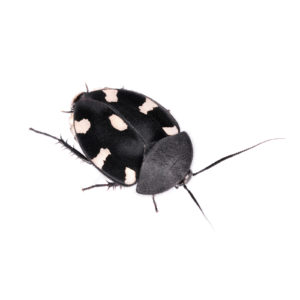
The Polka Dots
Therea petiveriana
Home Range: Southern India
Habitat: Ground-dwellers found in scrub forests
Wild Diet: Rotting leaves
Life Span: Up to 1 year
Interesting Facts: The bold pattern of the Domino Roach is not only eye-catching but also a deterrent to predators. The pattern is thought to have evolved to mimic a local, similarly patterned aggressive ground beetle that can spray an irritating chemical in defense. Domino Roaches are gregarious and use chemical pheromones to communicate with each other. They can secrete a defensive compound to warn other roaches of impending danger.